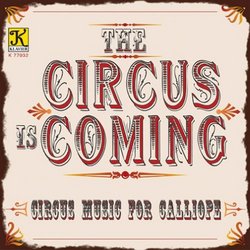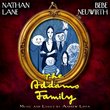Good Old Calliope Music Revisited!
James Yelvington | USA | 03/30/2005
(5 out of 5 stars)
"This Klavier label CD is a bit of both nostalgia and oddity. The days of the calliope may be mostly long past, but in its day the instrument was a marvel of human engineering and showmanship, and on the steamboats of the Mississippi (and elsewhere) it attracted the attention--and the money--of countless folks looking for entertainment. (As TV ads do today.)
The music on this disk is played on a 1912 National calliope "in a prominent midwestern collection," and obviously the instrument has been maintained in very good condition, for the intonation and tone quality are remarkable. The music is a collection of 30 characteristic pieces, about half of which will be familiar to most everyone. One of my favorites is the opening medley (Dixie, Yankee Doodle, O Susannah, Old South Cake Walk & Hot Time in the Old Town Tonight), which sounds great and hits highlights of this musical period and genre. Other good examples include "Under the Double Eagle," "Smiles," "Oh Dem Golden Slippers," "In the Good Old Summer Time," "Stars & Stripes Forever," and "God Bless America." A few of the pieces, like "God Bless America," are played in a moderate singing tempo, but most are fast and peppy. As such they seem to offer an indomitably optimistic view of the world.
One unusual feature is the apparent attention given to the Charles Lindberg aviation triumph: all of four pieces seem to relate to it (Spirit of St. Louis March, Hello Lindy, Lucky Lindy, and You Flew Over).
A caution is perhaps in order. The consistently high-pitched sound of the calliope may bore or fatigue the ears after a while, so I wouldn't recommend listening to the entire CD in one session. Instead, give yourself 10 or 15 minutes of it at a time, and I think you'll find it an unusual and delightful musical treat.
One question in my mind is whether the performances are live or are some sort of automatic reproduction (as from a player piano). From my listening I suspected automatic performance on some pieces which seemed beyond the capabilities of 10 fingers, but the scanty information in the insert sheds no light on this point.
All in all, I heartily recommend this CD for those who are interested in the wide breadth of musical types which have played a part in the history of America, for those who have an interest in musical instrument technology, and for those who have a nostalgic fondness for the music of a certain era.
"


 Track Listings (30) - Disc #1
Track Listings (30) - Disc #1

